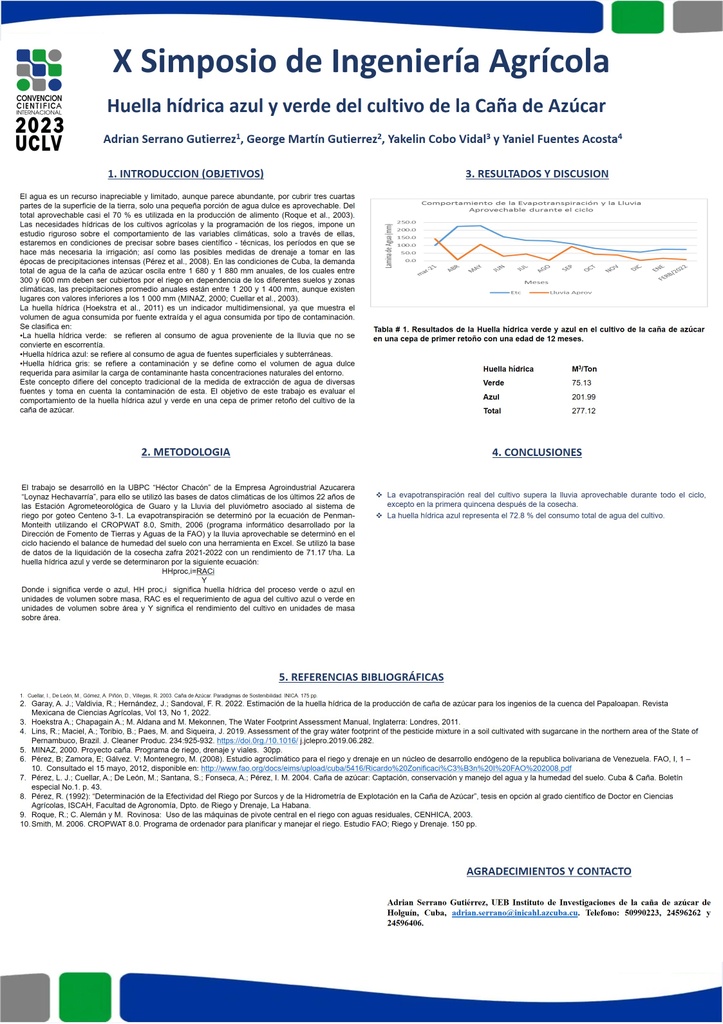Executive Secretary

9th International Scientific Conference on Agricultural Development and Sustainability
10th Symposium of Agricultural Engineering

Abstract
The water footprint is an environmental indicator that has become relevant in recent years as a basis for planning and decision-making in the management of water resources. The development of sugarcane cultivation in the eastern part of the country where rainfall does not cover its water needs and where droughts are more prolonged, where variability and climate change create uncertainty about possible effects on sugarcane activity in the region. The objective of the work was to evaluate the behavior of the blue and green water footprint in a 12-month-old strain of the first shoot of the sugarcane crop in the Centeno 3-1 drip irrigation system of the UBPC "Héctor Chacón" of the Agroindustrial Sugar Company "Loynaz Hechavarría". The international methodology was followed to determine evapotranspiration by the Penman-Monteith equation using CROPWAT 8.0 and the blue and green water footprint. The results showed: that the real evapotranspiration exceeded the usable rain during the entire cycle except in the first fortnight of March after the harvest. The blue water footprint represents 72.8 % of the total water footprint, so irrigation plays an essential role in the productive results of the crop in this drip irrigation system.
Resumen
La huella hídrica es un indicador medioambiental que ha tomado relevancia en los últimos años como base para la planificación y toma de decisiones en el manejo del recurso hídrico. El desarrollo del cultivo de la caña de azúcar en la zona oriental del país donde las precipitaciones no cubren las necesidades hídricas de este y donde las sequias son más prolongadas, donde variabilidad y el cambio climático crean incertidumbre sobre posibles afectaciones a la actividad cañera en la región. El objetivo del trabajo fue evaluar el comportamiento de la huella hídrica azul y verde en una cepa de primer retoño de 12 meses del cultivo de la caña de azúcar en el sistema de riego por goteo Centeno 3-1 de la UBPC “Héctor Chacón” de la Empresa Agroindustrial Azucarera “Loynaz Hechavarría”. Se siguió la metodología internacional para determinar la evapotranspiración por la ecuación de Penman-Monteith utilizando el CROPWAT 8.0 y la huella hídrica azul y verde. Los resultados mostraron: que la evapotranspiración real supero a la lluvia aprovechable durante todo el ciclo excepto en la primera quincena de marzo después de la cosecha. La huella hídrica azul representa el 72.8 % de la huella hídrica total, por lo que el riego juega un papel esencial en los resultados productivo del cultivo en este sistema de riego por goteo.
About The Speaker

MsC. Adrian Serrano Gutierrez

Discussion

